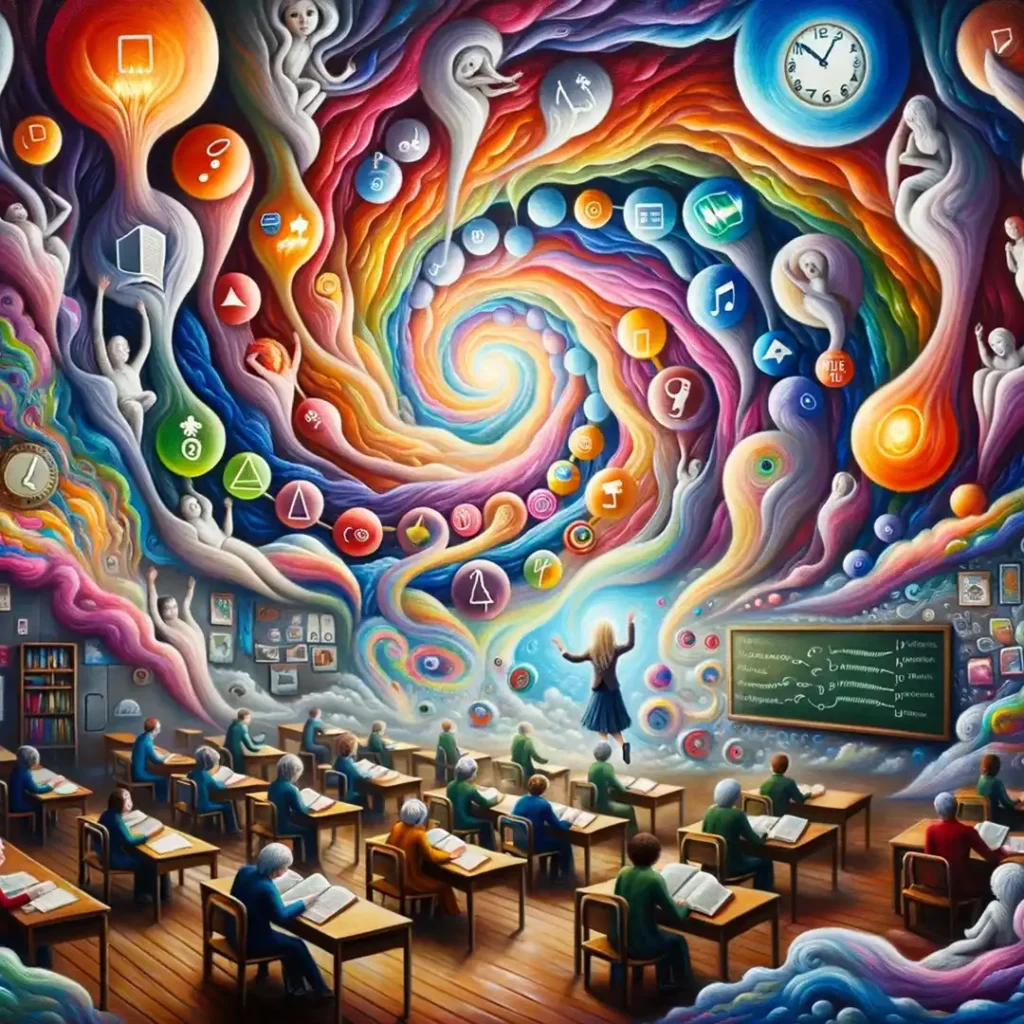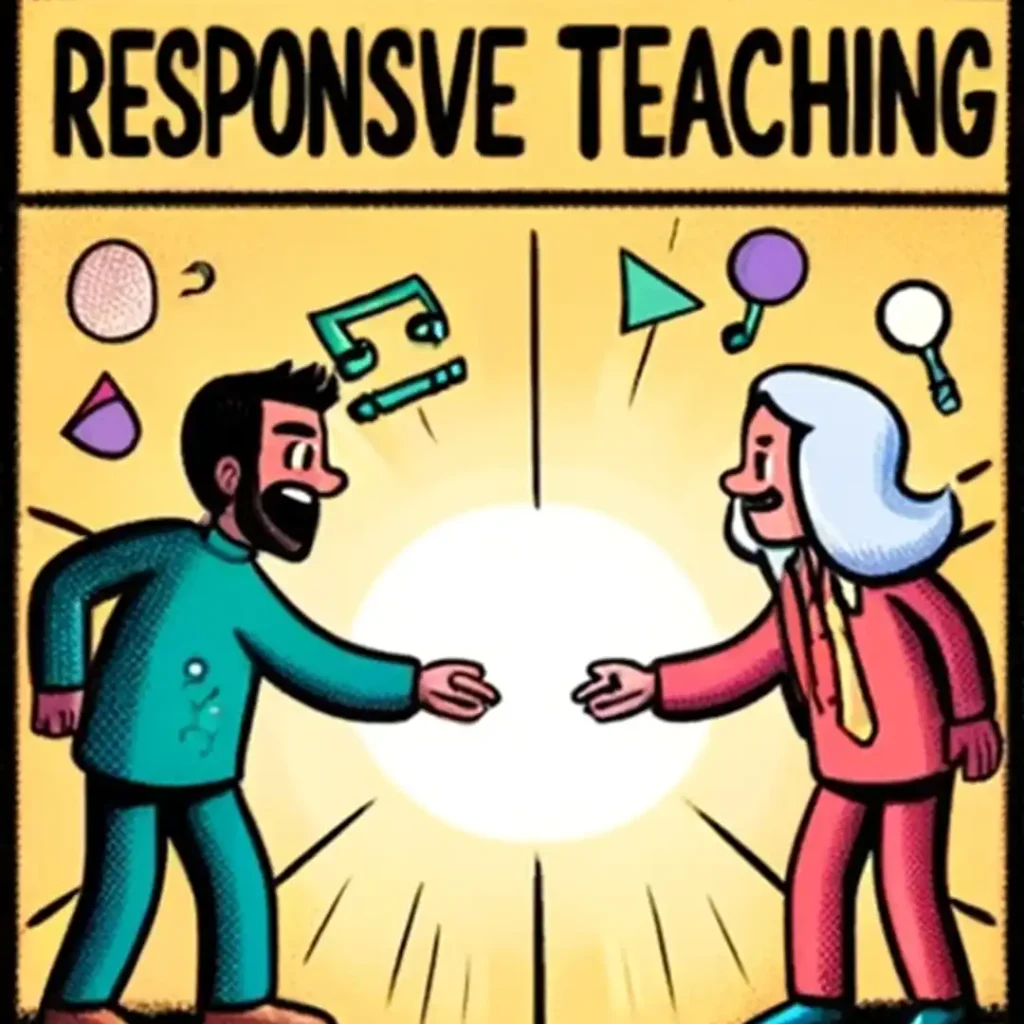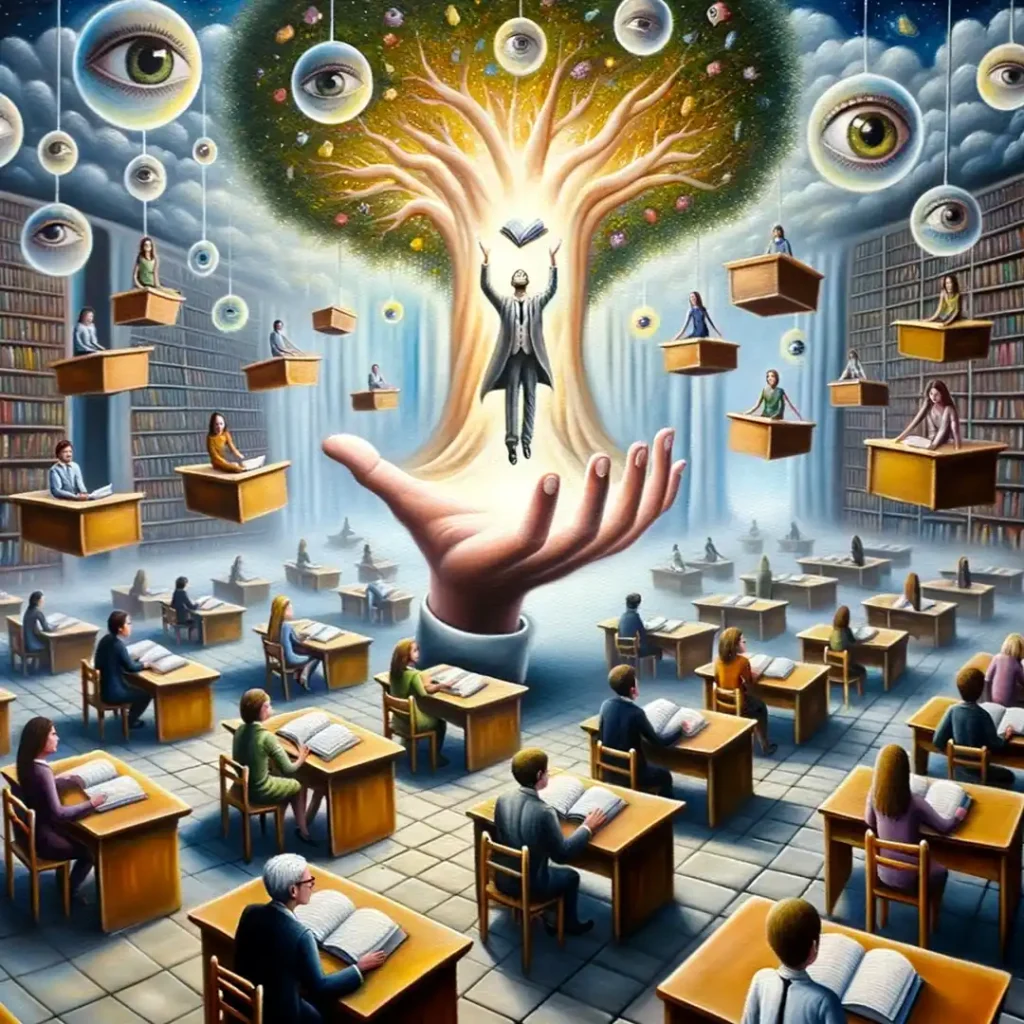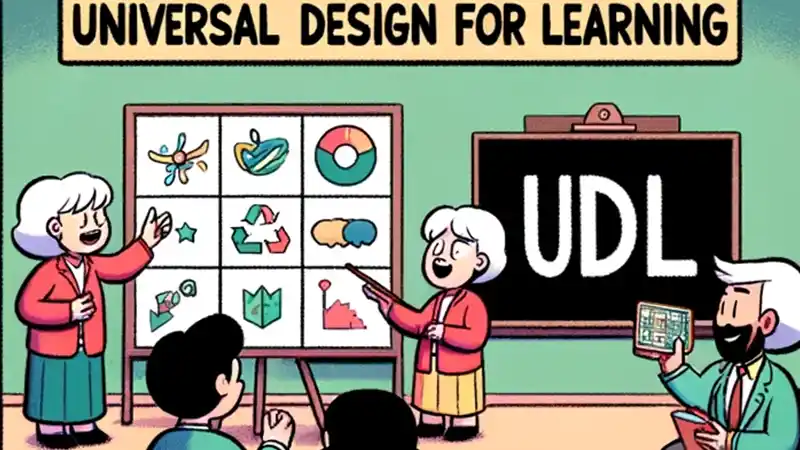As a teacher, I’ve been fortunate to witness the evolution of pedagogical practices and philosophies that prioritize inclusivity and individualized learning. In recent years, two approaches have emerged that have not only transformed my classroom but have also consistently proven their worth in fostering optimal student outcomes: Differentiated Instruction (DI) and Universal Design for Learning (UDL). Through my experiences and observations, it’s become evident that tailoring our educational practices to cater to the diverse array of learners we encounter is not just commendable but essential.
Imagine a world where every student, regardless of their learning abilities, preferences, or challenges, felt empowered and equipped to grasp content with confidence. This is the vision that DI and UDL collectively support. By ensuring that every lesson and activity can be accessed, understood, and applied by all students, we are championing an educational landscape where success is not the exception but the norm.
Understanding Differentiated Instruction
So, what is Differentiated Instruction? At its core, DI is a teaching philosophy and strategy aimed at tailoring instruction to meet individual student needs. It acknowledges that students come to our classrooms with a variety of backgrounds, readiness levels, skill sets, and learning preferences. Instead of delivering a one-size-fits-all lesson, DI encourages us to plan and execute multiple avenues for students to take in information, process it, and demonstrate understanding.
For instance, consider a lesson on the water cycle. Recognizing that students have different learning modalities, I might offer:
– A short video for visual learners.
– A hands-on experiment for kinesthetic learners where they recreate the water cycle using plastic bags, water, and sunlight.
– An engaging story or narrative for auditory learners that weaves through the stages of the water cycle.
By providing multiple pathways to understanding, we ensure that every student can engage with the content in a way that aligns with their strengths and preferences.
In another example, during a literature unit, I introduced character analysis. Recognizing the varied reading levels in my classroom, I offered books at varying complexities, ensuring every student could delve deep into their chosen text without feeling overwhelmed or under-challenged. This approach not only boosted their confidence but also allowed for rich, differentiated discussions as students brought unique perspectives based on their individual texts.
It’s been heartening to see how these methods have unlocked potential in students who previously felt alienated or left behind by traditional teaching methods. The spark in their eyes when they connect with the content, often for the first time, is why many of us entered the teaching profession in the first place.
In essence, Differentiated Instruction demands a bit more groundwork but yields results that resonate far beyond the walls of the classroom. It champions the belief that every student is unique and that our teaching should reflect and honor that individuality. By understanding and implementing DI, we’re not just teaching subjects; we’re nurturing confident, self-aware learners who are prepared to tackle challenges both inside and outside the educational realm.
Exploring Universal Design for Learning

Navigating from the customizable landscape of Differentiated Instruction, we venture into the inclusive framework of Universal Design for Learning. At its heart, UDL is not just about personalization but about creating an inclusive environment from the get-go. Drawing inspiration from architectural universal design principles, where environments are created accessible to everyone, UDL applies this mindset to learning.
The Foundational Concepts
UDL is structured around three primary principles that address the “why”, “how”, and “what” of learning:
Engagement (the ‘why’ of learning): This principle emphasizes sparking interest and motivation in students. It acknowledges that each student has a unique set of triggers that stimulate curiosity and motivation.
Representation (the ‘what’ of learning): Here, UDL stresses presenting information in multiple formats. Recognizing that learners grasp information differently, whether through visual aids, auditory tools, or tactile experiences, the emphasis is on diversifying content delivery.
Action & Expression (the ‘how’ of learning): This is all about diversifying the ways students can express their understanding and skills. Whether it’s through writing, speaking, art, or other mediums, UDL encourages varied methods of demonstrating knowledge.
UDL Strategies in Classroom Settings
In my classroom, UDL has reshaped how I approach lesson planning and delivery. Here are some strategies I’ve found invaluable:
Flexible Digital Tools: I’ve integrated platforms that allow text to be transformed into speech or vice versa. This ensures that whether a student is an auditory or visual learner, they can access the content in a manner that suits them best.
Choice Boards: Offering students a menu of activities, they can select how they’d like to demonstrate their understanding. For instance, after a unit on the solar system, students might choose between creating a model, writing a song, making a presentation, or drafting a report.
Clear and Multiple Instructions: Providing instructions both orally and in written form, or even using graphic organizers, ensures all students understand the task at hand. This is especially beneficial for students who might struggle with one mode of instruction over another.
Interactive Learning Stations: These are activity centers that focus on different aspects of a topic. By moving through stations at their own pace, students can engage with the material using varied approaches, from hands-on experiments to interactive digital simulations.
The beauty of UDL lies in its proactive approach. Instead of retroactively making accommodations or modifications, UDL asks us to anticipate the diverse needs of our students and design our lessons accordingly. It’s about creating a classroom environment where barriers to learning are minimized from the outset, and every student can navigate the path to understanding with confidence and autonomy.
As educators, our ultimate goal is to foster lifelong learners. By weaving the principles of UDL into our teaching tapestry, we are ensuring that every student, irrespective of their abilities or challenges, has an equal shot at success, not just academically but in every sphere of life.
The Synergy of DI and UDL

In isolation, both Differentiated Instruction (DI) and Universal Design for Learning (UDL) offer powerful methodologies to reshape the educational experience. But when these two are woven together, the resultant synergy amplifies the impact, creating a holistic learning environment that’s both inclusive and adaptive. Let’s delve into why this merging is not just beneficial but transformative.
Why Merging DI and UDL is Effective
Comprehensive Approach: While DI tailors instruction to individual needs, UDL sets the stage for an inclusive learning environment from the beginning. Together, they ensure that every student’s needs are anticipated and addressed, both in terms of accessibility and engagement.
Reduced Barriers: By proactively designing lessons with UDL principles and then tailoring them further with DI strategies, educators can minimize the learning barriers students might face, ensuring smoother transitions and more consistent engagement.
Empowered Learning Experience: Students are not just passive recipients of knowledge but active participants in their own learning journey. The combined approach gives them the tools, choices, and flexibility to navigate their educational path in a way that best aligns with their strengths and interests.
Benefits of Integrating DI and UDL
Marrying the principles of Differentiated Instruction (DI) with Universal Design for Learning (UDL) is akin to creating a bridge where the foundational pillars of inclusivity meet the customizable pathways of individual instruction. This integration has a myriad of benefits that extend beyond academic achievement, nurturing not only knowledgeable students but also confident, self-aware individuals.
Increased Engagement: Tailoring Learning Experiences to Individual Needs
Engagement is the magic spark in education. When students are invested in their learning, the outcomes are exponentially better. By integrating DI and UDL, we tailor the learning environment to resonate with the unique interests, strengths, and needs of each student. This could be as simple as offering choice in reading materials or as intricate as designing multi-faceted projects that cater to various learning modalities. The outcome? Students who are eager to learn, explore, and contribute, as they recognize their learning journey is personalized for their success.
Enhanced Accessibility: Making Content Available and Comprehensible for All
Every educator knows the challenge of ensuring content is both accessible and comprehensible to a diverse classroom. With the combined powers of UDL’s proactive design and DI’s reactive adaptability, we ensure every student can access content in a way that makes sense to them. Whether it’s through auditory aids, interactive activities, visual demonstrations, or hands-on experiments, the merged approach ensures there are multiple entry points to understanding, catering to the full spectrum of learners.
Improved Learning Outcomes: Realizing the Academic Potential of Every Student
One of the most tangible benefits of integrating DI and UDL is the noticeable improvement in academic outcomes. When students are taught in ways that align with their personal strengths and needs, they not only grasp concepts better but also retain and apply them more effectively. The ripple effects are profound: better grades, deeper understanding, heightened curiosity, and an ingrained love for learning. In essence, by catering to the individual, we uplift the collective.
Fostering Inclusivity: Creating an Environment Where Every Student Feels Valued
Beyond the academics, there’s an intrinsic value in making every student feel seen, heard, and valued. The integration of DI and UDL does just that. It sends a powerful message: “You matter. Your way of learning matters. You belong here.” In a world where differences can often lead to feelings of isolation, our classrooms become sanctuaries of inclusivity. Students not only learn subjects but also the invaluable lessons of empathy, diversity, and collaboration. They understand that every individual brings something unique to the table, and this mosaic of perspectives enriches the learning environment.
Challenges and Considerations

While the integration of Differentiated Instruction (DI) and Universal Design for Learning (UDL) promises a multitude of benefits, it is not without its challenges. The process can be intricate, demanding, and, at times, overwhelming. Recognizing these potential hurdles and being equipped with solutions is essential for successful implementation. Here’s an exploration of the challenges and some best practices to address them.
Potential Hurdles when Merging DI and UDL
Increased Planning Time: Designing a lesson that incorporates both DI and UDL principles can be time-consuming, especially when trying to anticipate the diverse needs of every student in the classroom.
Resource Limitations: Ensuring varied resources for multiple entry points of learning and differentiated outcomes might strain the available classroom resources, both in terms of materials and technology.
Maintaining Consistency: Balancing differentiated tasks while ensuring a consistent learning experience for all students can be challenging.
Classroom Management: With students potentially working on different tasks at their own pace, managing the classroom environment can become complex.
Assessment Complications: Creating and grading varied assessment tools for different students can be demanding and time-intensive.
Solutions and Best Practices
Collaborative Planning: Team up with fellow educators to share the planning load. Brainstorming and sharing resources can ease the burden and bring in diverse perspectives, leading to richer lesson designs.
Leverage Technology: Utilize educational platforms and digital tools that allow for customization and adaptation. Many modern tools come equipped with features that support both DI and UDL principles, from adjustable reading levels to interactive simulations.
Clear Learning Objectives: While the methods and paths might vary, ensure that the core learning objectives remain consistent for all students. This provides a guiding north star, ensuring that while approaches may differ, outcomes converge.
Structured Flexibility: While flexibility is key, it’s equally essential to have a structured routine. Clear guidelines, check-in points, and time management strategies can help maintain order in a differentiated environment.
Portfolio-Based Assessment: Instead of traditional testing, consider portfolio-based assessments where students accumulate their work, reflecting their learning journey. This allows for varied outputs while maintaining a consistent evaluation criterion.
Continuous Professional Development: As educators, our learning never stops. Engage in workshops, seminars, and courses that delve deeper into the integration of DI and UDL. The more equipped we are, the better we can navigate challenges.
Feedback Loop: Regularly seek feedback from students. Understanding what’s working and what’s not directly from the learners can provide invaluable insights and allow for timely adjustments.
The journey of merging DI and UDL might be laden with challenges, but with foresight, preparation, and a commitment to continuous improvement, these challenges can be transformed into stepping stones. Remember, the goal is not perfection but progression. Each hurdle overcome is a step closer to a classroom where every student thrives, and that’s a goal well worth striving for.
Conclusion
Conclusion
The evolution of the educational landscape has always been a reflection of society’s progression, and the integration of Differentiated Instruction (DI) and Universal Design for Learning (UDL) stands as testament to our commitment to inclusivity, adaptability, and holistic growth. As we stand on the precipice of the future, the symbiosis of DI and UDL holds more than just promise; it holds potential.
The Future of DI and UDL in Education
Education’s future will undoubtedly be shaped by an even greater emphasis on personalization, technology integration, and global inclusivity. In this landscape, the combined approach of DI and UDL will not just be an added advantage but an essential cornerstone. We’re moving towards classrooms without borders, where learning is as fluid as it is structured, and every student, regardless of their background, abilities, or challenges, finds a place to shine.
Additional Resources
Further Reading on DI, UDL, and their Integration:
“Differentiated Instruction Made Practical” by Rhonda Bondie and Akane Zusho
“Universal Design for Learning: Theory and Practice” by Anne Meyer, David H. Rose, and David Gordon
Training and Workshops for Educators
CAST Professional Learning: A renowned organization offering training on UDL principles and practices.

